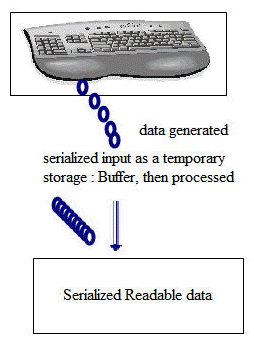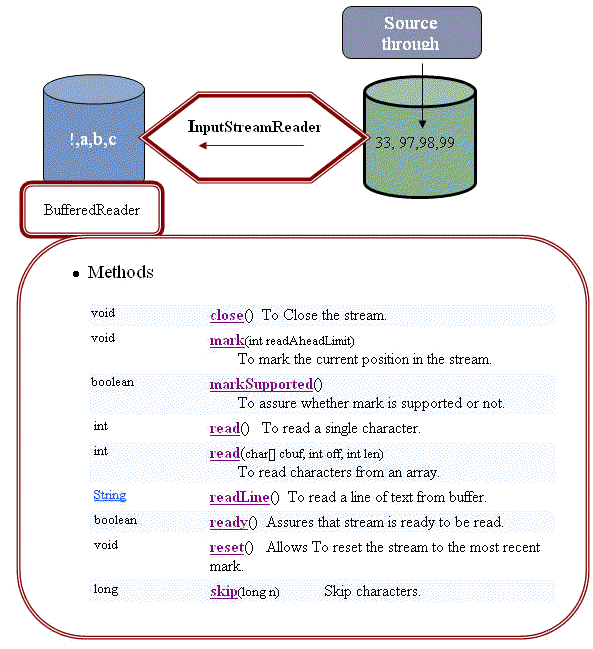
- I/O Streams
- Byte Streams: carries integer values of the data added as an input. (1), ranging a value 0-255 and 32 being a blank or space between two data during serialization. All byte stream classes are the descendents of
InputStreamandOutputStream(Read More). Java uses byte streams to perform input and output of 8-bit bytes. These classes are abstract classes, therefore can't be stream directly.
- FileInputStream in = null;
- FileOutputStream out = null;
- I/O byte streams,
FileInputStreamandFileOutputStream.- Character Streams: Any kind of text data handled by this stream. All character stream classes are descended from
ReaderandWriter.(Read More)
- FileReader inputStream = null;
- FileWriter outputStream = null;
- Buffered Streams: the efficiency of the streams mentioned above, further enhanced with Buffered stream.
- There are four buffered stream classes used to wrap FileReader or Writer streams:
- Create buffered byte streams:
BufferedInputStreamandBufferedOutputStream- Create buffered character streams
BufferedReaderandBufferedWriter.- Scanning and Formatting
- Scanning:
- Scanner
- BufferedReader(new FileReader("xanadu.txt")));
- Formatting
- I/O from the Command Line
- Data Streams: support binary I/O of primitive data type values like
boolean,char,byte,short,int,long,float,doubleand Strings. All data streams implement either thetwo interfaces namely DataInputor theDataOutputinterface. This section focuses on the most widely-used implementations of these interfaces,DataInputStreamandDataOutputStream.- Object Stream
- ObjectOutputStream(OOPS) Link
- File I/Omakes it easier to write platform-independent code that examines and manipulates files. The name of this class is misleading:
Fileinstances represent file names, not files. The file corresponding to the file name might not even exist.
File Objects
Random Access Files
The New I/O Packages
Each invocation of one of an InputStreamReader's read() methods may cause one or more bytes to be read from the underlying byte-input stream. To enable the efficient conversion of bytes to characters, more bytes may be read ahead from the underlying stream than are necessary to satisfy the current read operation.
For top efficiency, consider wrapping an InputStreamReader within a BufferedReader. For example:
BufferedReader in = new BufferedReader(new InputStreamReader(System.in));
